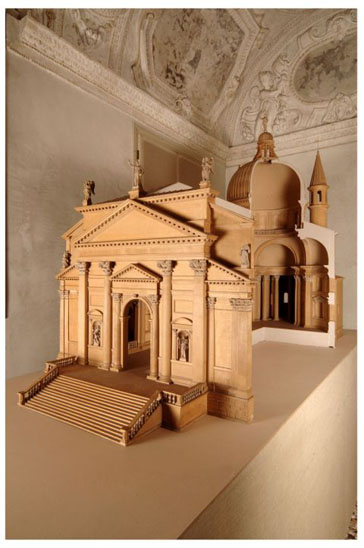The Royal Academy’s new show, “Andrea Palladio: His Life and Legacy”, has arrived just too late to mark the five hundredth anniversary of the great architect’s birth, in 1508. But as every exhibition organiser secretly knows, centenaries (even quincentennaries), have never been much more than pretexts anyway. What matters is the quality of the end result, and the good news is that this is a meticulously organised, thoroughly engaging survey of Palladio’s career. The show follows the architect’s work from his earliest palazzi in Vicenza to his magnificent, enchanting villas in the Veneto – and then moves on to the final climax of his work on the great churches of Venice, crowned by the Redentore.
Palladio’s life story was remarkable, a rags-to-riches tale of the sort that was really only possible – such was the highly stratified nature of sixteenth-century Italian society – in fields such as arts and letters, architecture and engineering. He was born in Padua to a humble stonemason who did much of his trade on the local canals, to judge by his nickname of “Pietro la Gondola” (or “Peter the Boat”). Palladio was himself apprenticed to another stonemason when he was just 13 years old, but he broke his contract early on and went to work for a rival concern. He was nearly thirty years old when his breakthrough finally came. The workshop employing him was engaged by a humanist intellectual and aristocrat, Giangiorgio Trissino, to extend his villa just outside Vicenza. Trissino saw potential in Palladio. He took him under his wing, began to educate him in the rudiments of classical architecture, and encouraged him to visit Rome itself. He even gave him his professional name. Being a poet as well as a scholar, Trissino called his protege “Palladio” after an angel in one of...


